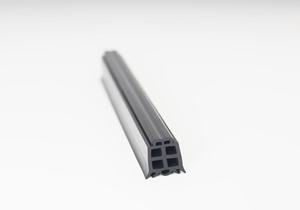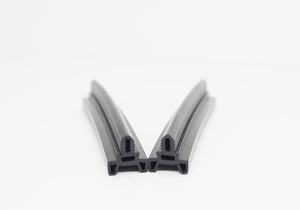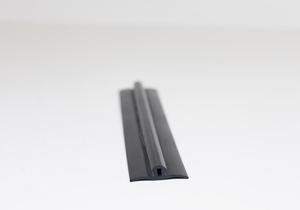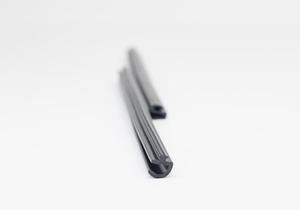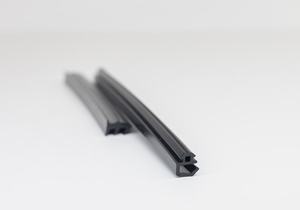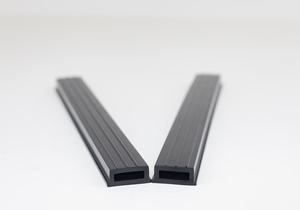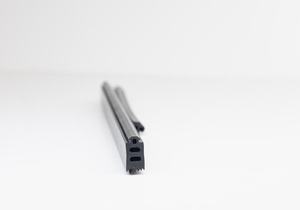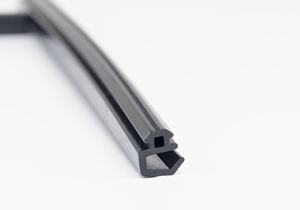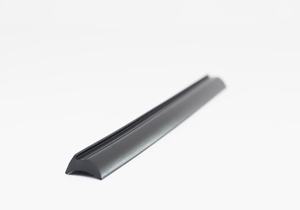Steel door seals, also known as door weatherstripping or door gaskets, are essential components of doors designed to provide a tight seal between the door and its frame. These seals serve multiple purposes, including insulation against drafts, soundproofing, and protection against moisture, dust, and insects. A comprehensive description of steel door seals encompasses their construction, installation methods, types, materials, and applications.
1. Construction and Components: Steel door seals typically consist of several components:
- Steel casing: The outer shell of the seal, usually made of galvanized or stainless steel for durability and corrosion resistance.
- Sealing element: This can be made of various materials such as rubber, neoprene, or silicone, which provide flexibility and compression to form a tight seal.
- Mounting mechanism: Steel door seals may feature adhesive backing, screw holes, or magnetic strips for easy installation onto the door frame.
2. Types of Steel Door Seals: Steel door seals come in various types to suit different door configurations and sealing requirements:
- Compression seals: These seals compress when the door is closed, forming a tight barrier against drafts and moisture.
- Magnetic seals: Utilize magnets embedded within the seal to create a secure closure, commonly used in refrigerator and freezer doors.
- Bulb seals: Feature a bulb-shaped sealing element that provides excellent compression and insulation properties.
- Brush seals: Consist of bristles made of nylon or other materials, which create a barrier against drafts while allowing smooth door operation.
- Kerf seals: Designed to fit into kerfs or grooves cut into the door frame, providing a concealed sealing solution.
3. Installation Methods: Installing steel door seals typically involves the following steps:
- Cleaning: Ensure the door frame is clean and free of debris to promote adhesion or proper mounting.
- Measurement: Measure the dimensions of the door frame to cut the seal to the appropriate length, if necessary.
- Attachment: Depending on the type of seal, it can be attached using adhesive backing, screws, or inserted into pre-cut grooves.
- Adjustment: Test the door for proper closure and adjust the seal if needed to achieve a tight fit and effective sealing.
4. Materials: Steel door seals are constructed using a combination of materials chosen for their durability, flexibility, and sealing properties:
- Steel: Provides structural support and resistance to wear and tear.
- Rubber: Offers flexibility and compression to create a tight seal, resistant to temperature variations and UV exposure.
- Neoprene: Known for its excellent weather resistance and durability, suitable for outdoor applications.
- Silicone: Provides superior heat resistance and flexibility, ideal for high-temperature environments.
5. Applications: Steel door seals find applications in various settings and industries:
- Residential doors: Used to seal exterior doors, interior doors, and garage doors to prevent drafts and improve energy efficiency.
- Commercial doors: Installed on office doors, storefronts, and industrial entrances to maintain climate control and reduce noise transmission.
- Automotive: Integrated into vehicle doors and trunks to provide a weatherproof seal and reduce road noise.
- Refrigeration: Employed in refrigerators, freezers, and cold storage facilities to maintain temperature control and prevent energy loss.
6. Benefits: Steel door seals offer several benefits:
- Energy efficiency: Reduce heating and cooling costs by preventing air leakage and improving insulation.
- Comfort: Create a more comfortable indoor environment by eliminating drafts and maintaining consistent temperatures.
- Soundproofing: Minimize noise transmission between rooms or from outdoor sources.
- Protection: Shield against moisture, dust, insects, and pollutants, enhancing indoor air quality and preserving the integrity of the door and its surroundings.
In summary, steel door gaskets play a vital role in providing a secure, weatherproof seal between doors and their frames, offering insulation, soundproofing, and protection against external elements. With various types, materials, and installation methods available, steel door seals can be tailored to suit specific applications and performance requirements, making them essential components in residential, commercial, automotive, and industrial settings.
